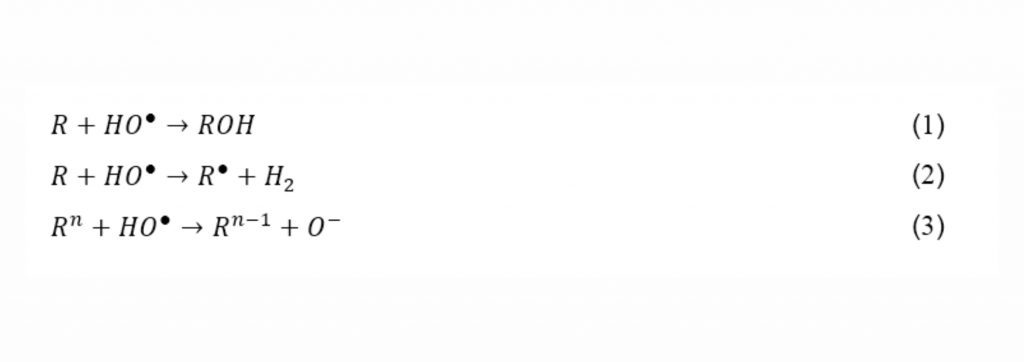Oxidation Process (2)
In evaluating advanced oxidation processes, it is necessary to consider the relative reactivity of the contaminant with OH radical, the amount of oxidant required, the effects of radical scavenging agents, temperature, pH and the ratio of oxidant to concentrations of contaminants.
Advanced photochemical oxidation processes are a combination of ultraviolet rays and an oxidizer (such as hydrogen peroxide, ozone, etc.) which in most cases produce hydroxyl radicals and subsequent reactions cause oxidation and degradation of micropollutants. The effluent will be radicalized with this.
Hydroxyl radicals have a slight selectivity in reacting with organic matter, which is a plus for an oxidizing agent. The selectivity of this radical is such that various organic materials with long structures or molecules containing unsaturated bonds such as chlorinated alkanes are very susceptible to oxidation with this radical, but simple molecules such as acetic, maleic and oxalic acid can not with OH. React. Saturated molecules are much more difficult to react with OH and have low velocity constants and are difficult to oxidize. The mechanism of oxidation of substances with OH depends on the type of organic matter, which can occur in two ways:
- The OH radical is converted to a water molecule by taking a hydrogen from an organic molecule, such as alkanes or alkynes.
- The second method that occurs in the case of olefins and aromatics is to add this radical to the molecular structure of the material and break its bonds.
The rate of contamination degradation is approximately proportional to the rate at which the contaminant reacts with the hydroxyl radical. The main mechanism in the advanced oxidation process is the production of reactive free radicals. Hydroxyl radicals are effective in destroying organic chemical compounds. These electron-friendly radicals react rapidly with the closest electron-bearing organic compound. The oxidation potential of hydroxyl radicals is 2.33 v. Also, the rate of oxidation reaction of these radicals is higher than conventional oxidants.
After the hydroxyl radicals are exposed to the organic chemical compounds of these two compounds, they react (Equation 1). The hydrogen in the organic chemical compounds is adsorbed to the radicals (Equation 2). Finally, the electron transfer takes place according to Equation 3.

Table (1) presents the oxidation potential of some common oxidants. According to this table, it can be seen that after fluorine, the strongest oxidizer is hydroxyl radical.
Table (1): Oxidation potential of oxidants and their relative oxidation strength
| Relative Oxidation Power | Oxidation Potential (Volts) | Oxidizing Agent |
| 2.33 | 3.03 | Fluorine |
| 2.06 | 2.80 | Hydroxyl radical |
| 1.78 | 2.42 | Atomic oxygen |
| 1.52 | 2.07 | Ozone |
| 1.31 | 1.78 | Hydrogen peroxide |
| 1.25 | 1.70 | Perhydroxyl radical |
| 1.24 | 1.68 | Potassium permanganate |
| 1.17 | 1.59 | Hypocritical acid |

